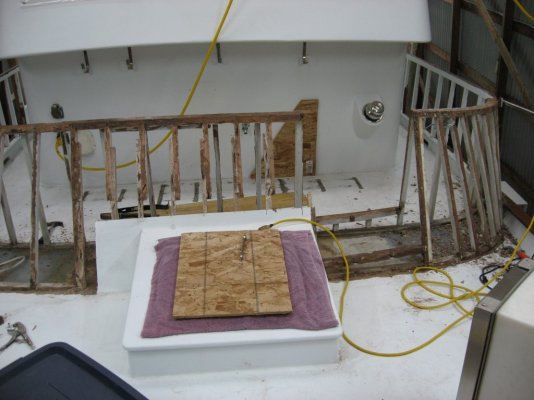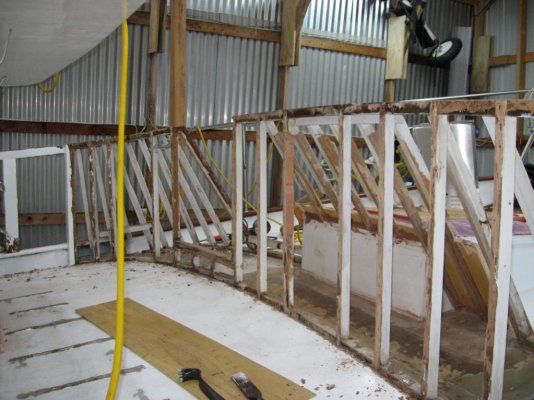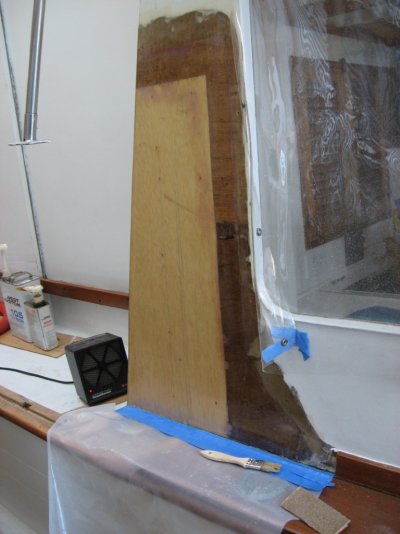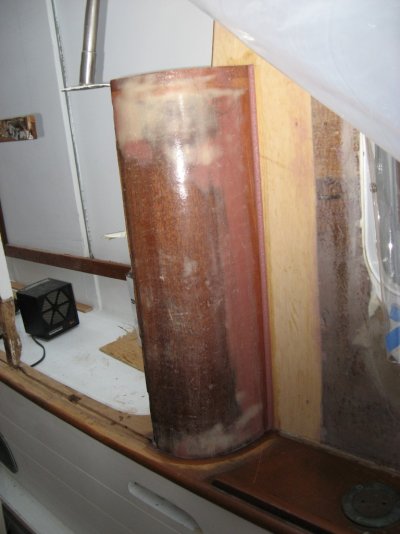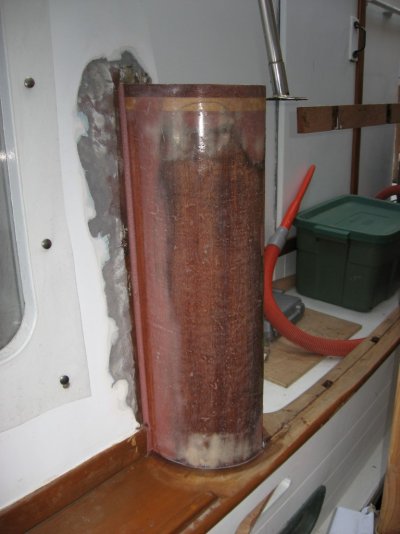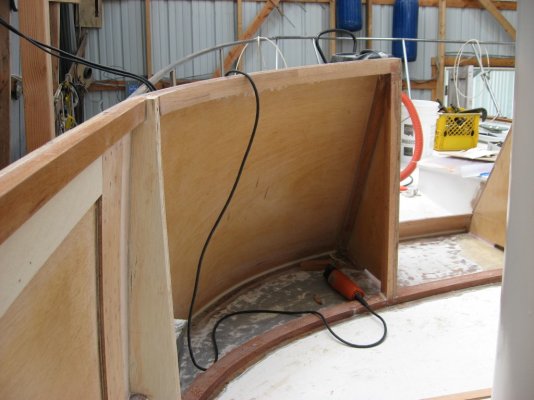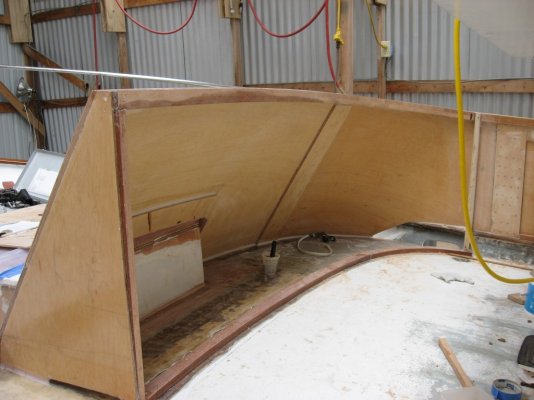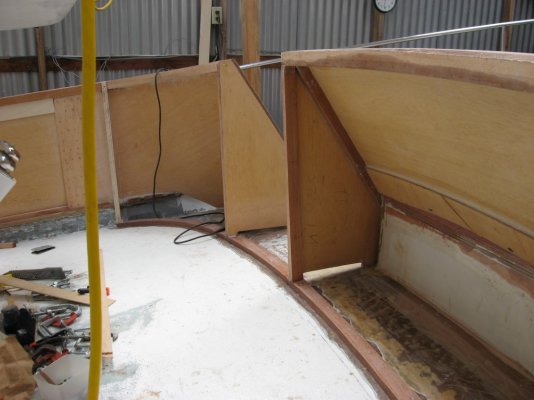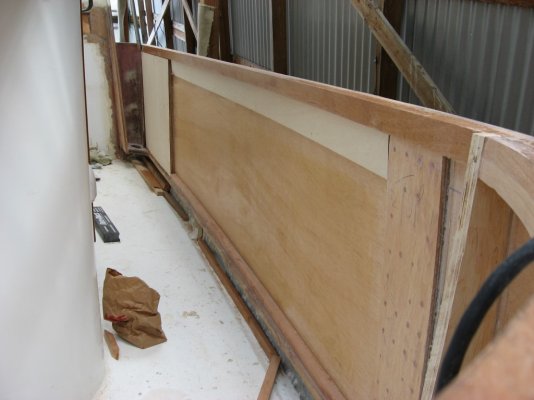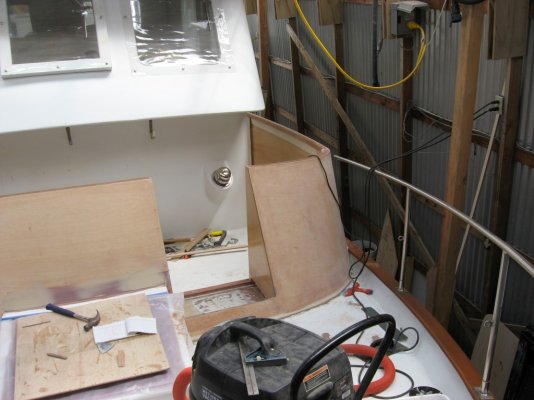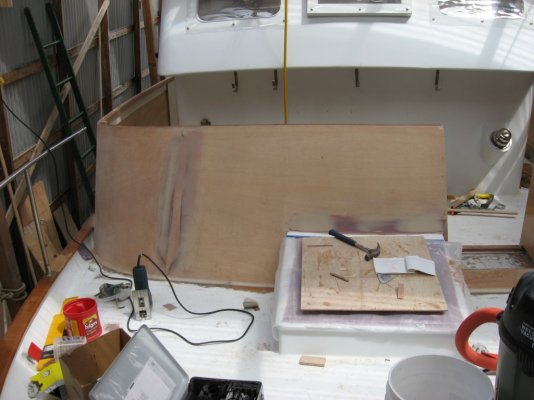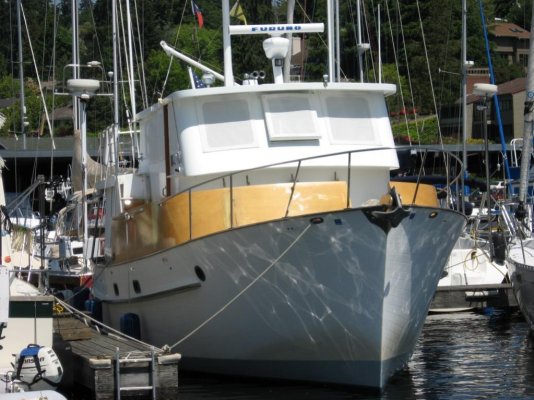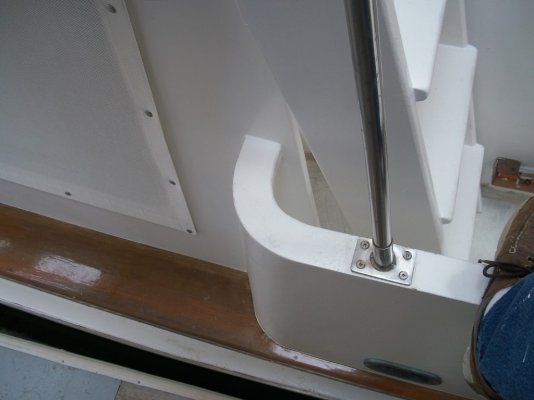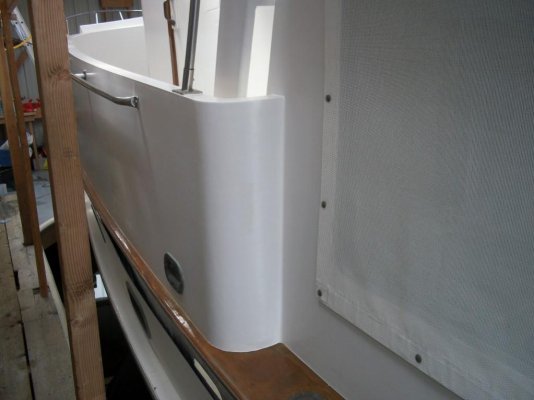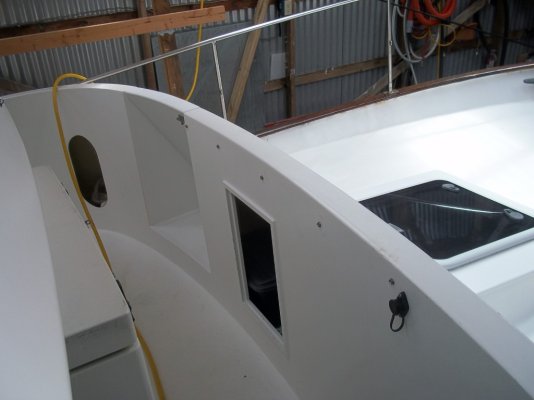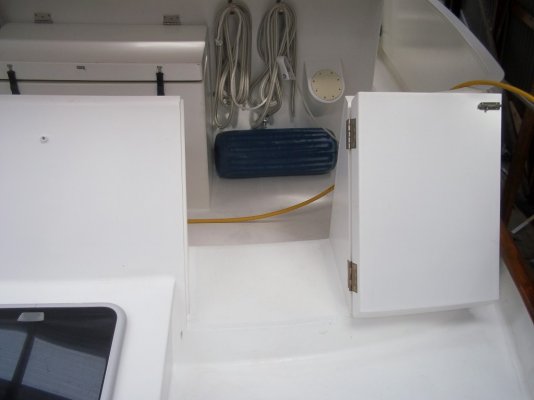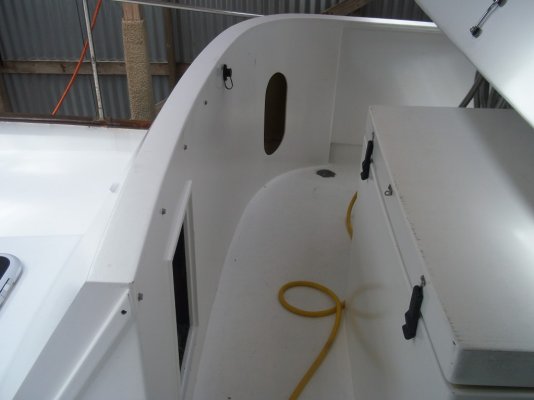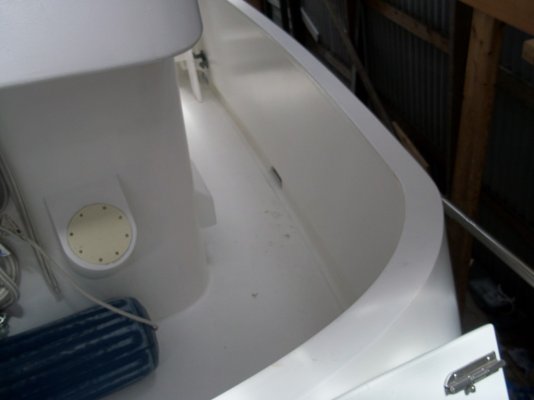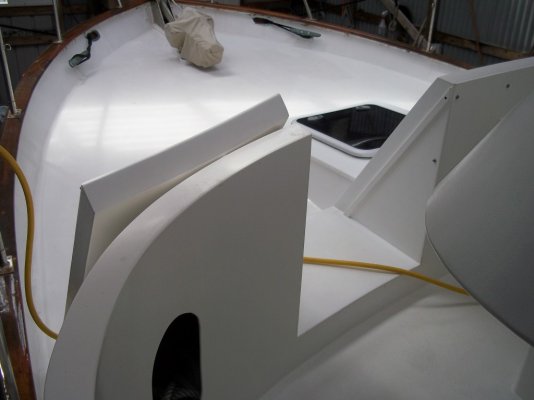- Joined
- Nov 8, 2012
- Messages
- 2,315
- Location
- USA
- Vessel Name
- Sandpiper
- Vessel Make
- Bluewater 40 Pilothouse Trawler
Here are pictures from my portuguese bridge (PB) replacement project that I was asked to post while attending a Bluewater 40 Pilothouse rendezvous.
I started the project in the fall of 2007 and finished in the spring of 2009 with a two month interruption for cruising during summer 2008. I usually worked two to three days per week around 6 to 8 hours/day with an occassional week off to maintain my sanity.
The PB was found to be full of rotted plywood and delaminating glass cloth by surveyor Matt Harris during the prepurchase survey in 2000. There were other issues more important that needed attention so the PB was patched cosmetically. Annual patching kept the portuguese bridge functional until the summer of 2007. We were rafting up to another boat that was on the reciprocal dock at Friday Harbor. The owner of the other boat was helping us raft when he used both hands to push us. He pushed both hands right through the rotted side of the PB! He was apologetic and said he didnt realize his own strength! We patched the hole with white duct tape and continued our cruise.
Upon return in September, started the PB restoration.
Removed the teak cap rails and plywood skin from the PB exposing the framing and allowed it to dry using a dehumidifier under a tarp. Sanded the good existing frames and replaced the bad ones with temporary frames.
I'll add to this post as I have the time.
I started the project in the fall of 2007 and finished in the spring of 2009 with a two month interruption for cruising during summer 2008. I usually worked two to three days per week around 6 to 8 hours/day with an occassional week off to maintain my sanity.
The PB was found to be full of rotted plywood and delaminating glass cloth by surveyor Matt Harris during the prepurchase survey in 2000. There were other issues more important that needed attention so the PB was patched cosmetically. Annual patching kept the portuguese bridge functional until the summer of 2007. We were rafting up to another boat that was on the reciprocal dock at Friday Harbor. The owner of the other boat was helping us raft when he used both hands to push us. He pushed both hands right through the rotted side of the PB! He was apologetic and said he didnt realize his own strength! We patched the hole with white duct tape and continued our cruise.
Upon return in September, started the PB restoration.
Removed the teak cap rails and plywood skin from the PB exposing the framing and allowed it to dry using a dehumidifier under a tarp. Sanded the good existing frames and replaced the bad ones with temporary frames.
I'll add to this post as I have the time.

